Ξ
- SITEMAP
- CONTACT US
- 8618267732328
News
Credibility ,the lifeblood of enterprise!
PRODUCT SERIES
- Fittings
- Butt Welding Fittings
- Forged Fittings
- 180 Degree Elbows
- 90 Degree Elbows
- 60 Degree Elbows
- 45 Degree Elbows
- 30 Degree Elbows
- Equal Tee
- Reducing Tee
- Concentric Reducer
- Eccentric Reducer
- Lap Joint Stub End
- Outlets
- Cap
- Bend
- Cross
- Coupling
- Stainless Steel Lateral Tee
- Bellows Expansion Joints
- Flexible Metal Hose
- Non-Standard/Custom Fittings
- Bleed & Flushing Rings
- Types of Flanges
- Anchor Flanges
- Blind Flanges
- Expander Flanges
- High Hub Flanges
- Lap Joint Flanges
- Long Weld Neck Flanges
- Nipoflanges
- Orifice Flanges
- Plate Flanges
- Ring Type Joint Flanges
- Reducing Flanges
- Slip On Flanges
- Socket Weld Flanges
- Spectacle Blind Flanges
- Square Flanges
- Spades & Ring Spacers
- Threaded Flanges
- Welding Neck Flanges
Your Location: Home > News
News - Yaang
The essence of pipeline valve
DataTime:[2021-4-4]
In the pipeline system, the valve is the control element, just like the human hand, so whether in life or in all walks of life, its importance is self-evident.
What are its functions? How to install pipeline valve? Next, let's get to know the four most important aspects.
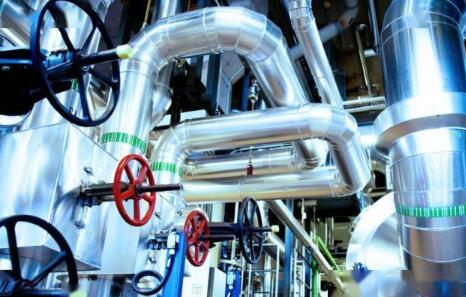
Four functions of valve
Cut off and open media
The flow channel is straight through valve, and its flow resistance is small. It is usually selected as the valve for cut-off and open medium.
Downward closing valve (stop valve, plunger valve) is less used because of its tortuous flow channel and higher flow resistance than other valves. Closed type valve can be selected when higher flow resistance is allowed.
Control flow
Usually choose easy to adjust the flow of the valve as control flow. A downward closing valve, such as a globe valve, is suitable for this purpose because its seat size is proportional to the stroke of the closing element.
Rotary valve (plug valve, butterfly valve, ball valve) and flex body valve (clamp valve, diaphragm valve) can also be used for throttling control, but usually only in a limited range of valve diameter.
Gate valve is a disc-shaped gate to cross cut the round valve seat. It can control the flow only when it is close to the closed position, so it is not usually used for flow control.
Commutation shunt
The valve can have three or more channels according to the need of directional diversion. Plug valve and ball valve are more suitable for this purpose, therefore, most of the valves used for directional diversion are selected as one of these valves.
But in some cases, other types of valves, as long as two or more valves are properly connected with each other, can also be used for diversion.
Medium with suspended particles
When there are suspended particles in the medium, it is most suitable to use the valve whose closing part slides along the sealing surface and has the function of wiping.
If the back and forth movement of the closing part to the seat is vertical, particles may be trapped. Therefore, this kind of valve is only suitable for basically clean medium unless the sealing surface material can allow particles to be embedded. Ball valve and plug valve can wipe the sealing surface in the process of opening and closing, so they are suitable for medium with suspended particles.
Three installation problems of valves
Inspection before installation
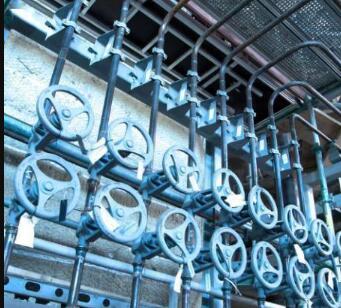
- 1. Carefully check whether the valve model and specification meet the drawing requirements.
- 2. Check whether the valve stem and disc are opened flexibly, and whether they are stuck or skewed.
- 3. Check whether the valve is damaged and whether the thread of threaded valve is correct and complete.
- 4. Check whether the combination of valve seat and valve body is firm, the connection between valve disc and valve seat, valve cover and valve body, and the connection between valve stem and valve disc.
- 5. Check whether the valve gasket, packing and fasteners (bolts) are suitable for the requirements of working medium properties.
- 6. The old or long-standing pressure relief valve should be removed, and the dust, sand and other debris should be cleaned with water.
- 7. Remove the port cover and check the sealing degree. The valve disc must be closed tightly.
General provisions for installation
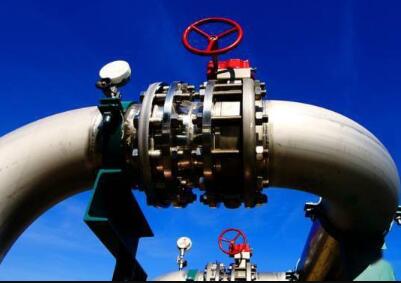
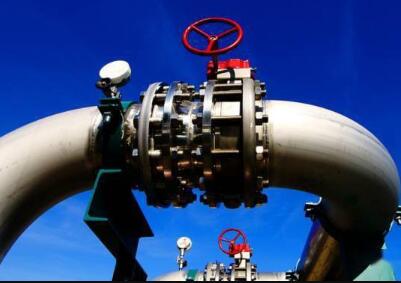
- 1. The installation position of the valve shall not hinder the operation, disassembly and overhaul of the equipment, pipeline and valve body, and the appearance of the assembly shall be considered.
- 2. The valve on the horizontal pipeline should be installed with the valve stem upward or inclined at a certain angle, but not with the hand wheel downward. The valve, stem and hand wheel on the high-altitude pipeline can be installed horizontally, and the valve can be opened and closed remotely by the chain at the lower part.
- 3. The arrangement is symmetrical, neat and beautiful; for the valves on the riser, if the process permits, the valve handwheel should be at the breast height, generally 1.0-1.2m above the ground, and the valve stem must be installed along the direction of the operator.
- 4. For valves on parallel risers, the elevation of the center line should be the same, and the clear distance between the hand wheels should not be less than 100 mm; for valves on parallel horizontal pipelines, they should be staggered to reduce the pipe spacing.
- 5. When heavy valves are installed on water pumps, heat exchangers and other equipment, valve supports shall be set; when valves are frequently operated and installed more than 1.8m away from the operating surface, a fixed operating platform shall be set.
- 6. If there is an arrow mark on the valve body, the direction of the arrow is the flow direction of the medium. When installing the valve, the arrow should point to the same direction as the medium in the pipeline.
- 7. When installing the flange valve, ensure that the two flange end faces are parallel and concentric with each other, and do not use double gaskets.
- 8. When installing threaded valve, a threaded valve shall be equipped with a union joint for easy disassembly. The setting of the movable joint should consider the convenience of maintenance, usually the water flows through the valve first and then through the movable joint.
Installation precautions
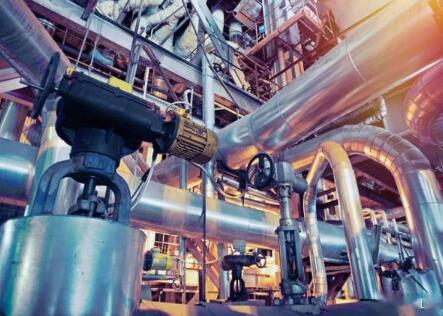
- 1. The valve body material is mostly made of cast iron, which is brittle, so it shall not be impacted by heavy objects.
- 2. When handling the valve, it is not allowed to throw it at will; when lifting the valve, the rope should be tied to the valve body, and it is strictly forbidden to be tied to the hand wheel, valve stem and flange bolt hole.
- 3. The valve shall be installed in the most convenient place for operation, maintenance and overhaul, and it is strictly prohibited to be buried underground. Inspection chamber shall be set for valves on directly buried pipelines and pipelines in trench to facilitate opening, closing and adjustment of valves.
- 4. Ensure that the thread is intact, and wrap hemp, lead oil or polytetrafluoroethylene raw material belt on the thread. When screwing, use a wrench to screw into the hexagonal valve body at one end of the pipe.
- 5. When installing the flange valve, pay attention to tighten the connecting bolts along the diagonal direction, and the force should be even when screwing, so as to prevent the gasket from deviation or causing the deformation and damage of the valve body.
- 6. The valve shall be kept closed during installation. For the threaded valve close to the wall, it is often necessary to remove the stem disc and hand wheel before turning. When disassembling, the valve should be disassembled after turning the hand wheel to keep the valve open.
Installation of six common pipeline valves
1、 Gate valve
Also known as gate valve, is the use of gate to control the opening and closing of the valve, by changing the cross section to adjust the pipeline flow and opening and closing of the pipeline. Gate valves are mostly used for pipelines with full open or full close operation for fluid medium.
Gate valve installation generally has no directional requirements, but can not be inverted.
2、 Stop valve
Is the use of disc to control the opening and closing of the valve. By changing the clearance between the disc and the seat, that is, changing the size of the channel section to adjust the medium flow or cut off the medium channel. Pay attention to the flow direction when installing the stop valve.
The principle that must be observed when installing the stop valve is that the fluid in the pipeline passes through the valve hole from bottom to top, commonly known as "low in and high out", and reverse installation is not allowed.
3、 Check valve
Check valve, also known as check valve and one-way valve, is a kind of valve that opens and closes automatically under the pressure difference between the front and back of the valve. Its function is to make the medium flow in only one direction and prevent the medium from flowing backward.
Check valve according to its different structure, there are lift type, swing type and butterfly clamp type. Lift check valve is divided into horizontal and vertical.
When installing the check valve, also pay attention to the flow direction of the medium, can not be installed reversely.
The pressure reducing valve is a kind of valve that reduces the inlet pressure to a certain required outlet pressure by regulation and keeps the outlet pressure stable automatically by relying on the energy of the medium itself.
From the point of view of fluid mechanics, the pressure reducing valve is a throttling element whose local resistance can be changed, that is, by changing the throttling area, the flow velocity and the kinetic energy of the fluid can be changed, resulting in different pressure loss, so as to achieve the purpose of reducing pressure. Then, the fluctuation of the pressure behind the valve is balanced with the spring force by the regulation of the control and regulation system, so that the pressure behind the valve remains constant within a certain error range.
Installation
- 1. The pressure reducing valve group installed vertically is generally set at a suitable height from the ground along the wall; the pressure reducing valve group installed horizontally is generally installed on the permanent operation platform.
- 2. Profile steel shall be respectively loaded into the wall outside two control valves (commonly used for stop valve) to form a bracket, and the bypass pipe shall also be stuck on the bracket for leveling and alignment.
- 3. The pressure reducing valve shall be vertically installed on the horizontal pipeline, and shall not be inclined. The arrow on the valve body shall point to the medium flow direction, and shall not be installed reversely.
- 4. Stop valves and high and low pressure gauges should be installed on both sides to observe the pressure changes before and after the valve. The diameter of the pipe behind the pressure reducing valve shall be 2 # - 3 #, larger than that of the inlet in front of the valve, and the bypass pipe shall be installed for maintenance.
- 5. The equalizing pipe of membrane pressure reducing valve should be connected to the low pressure pipe. Safety valve shall be set for low pressure pipeline to ensure safe operation of the system.
- 6. When it is used for steam decompression, a drain pipe shall be set. For the pipeline system with high purification requirements, a filter should be set in front of the pressure reducing valve.
- 7. After the installation of pressure reducing valve group, the pressure reducing valve and safety valve shall be tested, washed and adjusted according to the design requirements, and the adjusted marks shall be made.
- 8. When flushing the pressure reducing valve, close the inlet valve of the pressure reducer and open the flushing valve for flushing.
5、 Steam trap
The basic function of the steam trap is to discharge the condensate, air and carbon dioxide gas in the steam system as soon as possible, and at the same time, to prevent the leakage of steam automatically to the maximum extent. There are many kinds of traps with different performances.
According to the different working principle of the trap, it can be divided into the following three types:
❶ mechanical type: depending on the change of condensate water level in steam trap.
Include:
Floating ball type: the float is a closed hollow ball.
Open up float type: the float is bucket type with open up.
Open down float type: the float is a bucket type with open down.
❷ thermostatic type: depending on the change of liquid temperature.
Include:
Bimetallic sheet: the sensitive element is bimetallic sheet.
Vapor pressure type: the sensitive element is bellows or ink cartridge filled with volatile liquid.
❸ thermodynamic type: it depends on the change of thermodynamic properties of liquid.
Include:
Disc type: due to the same pressure, liquid and gas flow rate is different, resulting in different dynamic and static pressure, drive disc valve action.
Pulse type: when condensate with different temperatures passes through two throttling orifices in series, different pressures will be formed between two throttling orifices to drive the valve disc to act.
Installation
- 1. Block valve (stop valve) should be set before and after the steam trap, and a filter should be set between the steam trap and the front block valve to prevent the dirt in the condensate from blocking the steam trap.
- 2. A check pipe should be set between the drain valve and the rear block valve to check whether the drain valve works normally. If the check pipe is opened and a large amount of steam is emitted, the drain valve is broken and needs to be repaired.
- 3. The bypass pipe is set to discharge a large amount of condensate during start-up and reduce the drainage load of the steam trap.
- 4. When the steam trap is used to drain the condensate from the hot equipment, it should be installed at the lower part of the hot equipment, so that the condensate pipe can be connected to the steam trap vertically to prevent the hot equipment from storing water.
- 5. The installation position should be close to the drainage point as far as possible. If the distance is too far, air or steam will accumulate in the slender pipe in front of the trap.
- 6. When the horizontal pipeline of steam main is too long, the problem of drainage should be considered.
6、 Safety valve
The safety valve is a special valve which is normally closed under the action of external force. When the medium pressure in the equipment or pipeline rises beyond the specified value, the medium pressure in the pipeline or equipment can be prevented from exceeding the specified value by discharging the medium to the outside of the system.
Safety valve is an automatic valve, which is mainly used in boilers, pressure vessels and pipelines. The control pressure does not exceed the specified value, which plays an important role in protecting personal safety and equipment operation. Injection safety valve can only be used after pressure test.
Install
- 1. Before installation, the product must be carefully inspected to check whether there is a certificate and product instructions, so as to clarify the constant pressure situation when leaving the factory.
- 2. The safety valve should be arranged near the platform as far as possible for inspection and maintenance.
- 3. The safety valve should be installed vertically, the medium should flow from the bottom to the top, and the verticality of the valve stem should be checked.
- 4. In general, the front and back of the safety valve can not be set with block valve to ensure safety and reliability.
- 5. Pressure relief of safety valve: when the medium is liquid, it is generally discharged into the pipeline or closed system; when the medium is gas, it is generally discharged to the outdoor atmosphere.
- 6. The oil and gas medium can be discharged into the atmosphere generally. The outlet of the relief pipe of the safety valve should be 3M higher than the highest structure around, but the following situations should be discharged into the closed system to ensure safety.
- 7. The minimum diameter of the pipeline shall be equal to the inlet diameter of the valve; the diameter of the discharge pipe shall not be less than the outlet diameter of the valve, and the discharge pipe shall be led to the outside and installed with elbow, so that the outlet of the pipe faces the safety zone.
- 8. When the safety valve is installed, when the connection between the safety valve and equipment and pipeline is open hole welding, the opening diameter shall be the same as the nominal diameter of the safety valve.
Source: China Valves Manufacturer – Yaang Pipe Industry Co., Limited (www.yaang.com)

Tel No:+86-18267732328 / Email:[email protected]
Address:Longwan District, Wenzhou, Zhejiang Province, China.
Copyright Notice © www.yaang.com Yaang Pipe Industry Co., Limited All rights reserved.
Yaang Pipe Industry Co., Ltd. is an international supplier of piping solutions for flange, butt welding fittings, socket welding fittings and threaded fittings. Our products are widely used in different industrial fields, including oil and gas, chemical industry, petrochemical industry, power plant, pulp and paper industry, environmental and water conservancy engineering, engineering projects, etc.





